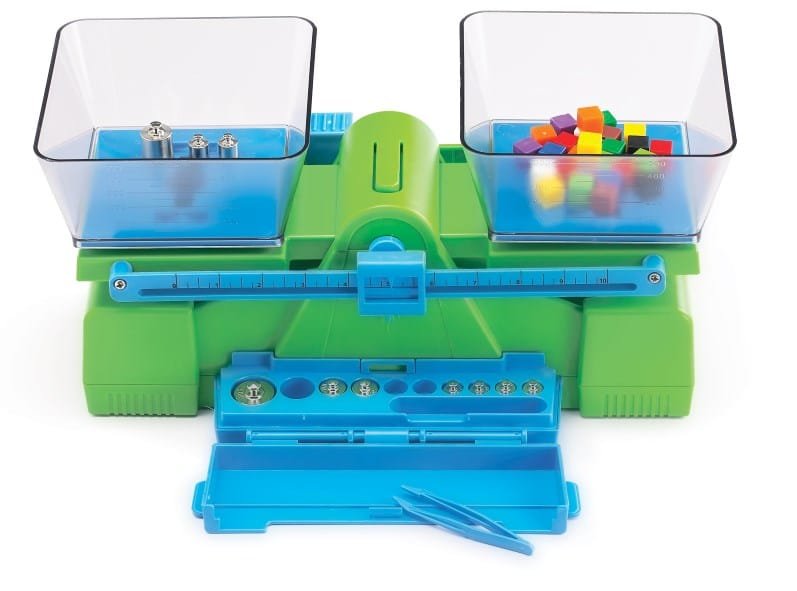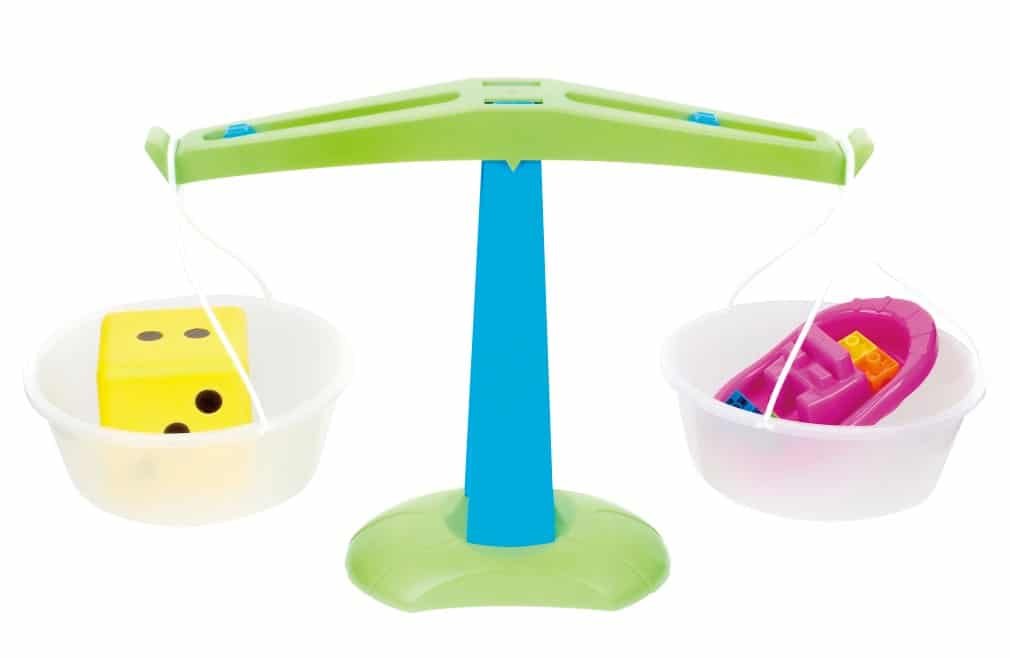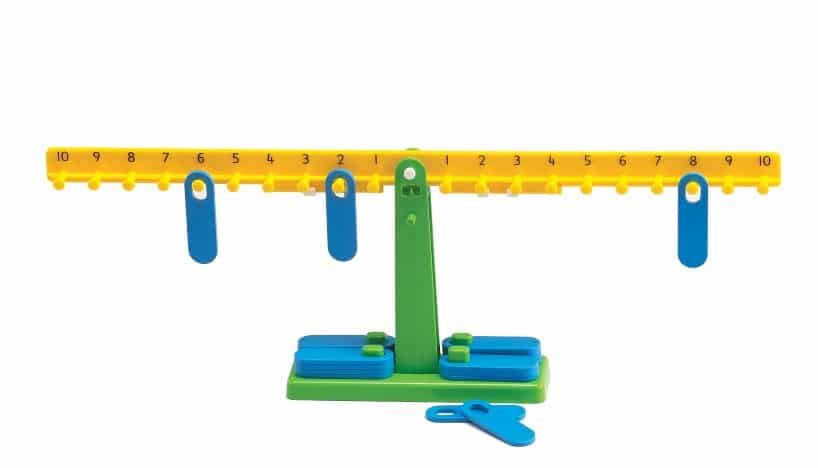Sometimes Referred to as balance Scales
• Measurement: Mass

Balances come in many forms from simple to sophisticated. Most balances come with a bucket on either side that allows students to weigh objects or liquids. Some buckets will come with lids, pouring spouts and calibrated scales on the side. A balance should have small sliding compensators on either side of the fulcrum (pivot point). These may be adjusted to fine-tune the balancing arms.
Note that technically when we talk about weight, what we really mean is mass, but the process is called weighing.
What is the Difference between a balance and a scale?
A scale will measure the mass of an item or group of items and indicate the mass on a scale via a pointer or on a digital readout.
A balance compares the masses of two objects. The heavier object will cause one arm to move lower and the other higher (an imbalance).
Balances Videos

Mathematical Language
Typically, young children explore the ideas of heavy and heavier or light and lighter.
Later they seriate; that is, they order objects from heavy to heavier to heaviest, or light, lighter and lightest. Other language: balance, calibrate, scales, equal, equivalence.
Using Balances
Students progress from using non-uniform units (eg marbles and cubes of different sizes), to uniform nonstandard units (cubes all of the same size), to standard units. Sophisticated balances come with sets of weights.
All students should be provided with balancing experiences as it assists with the fundamental idea of equivalence, which is one of the key ideas behind algebra. Number Balances make use of this feature to develop fundamental number and algebra concepts.

Typical Classroom Requirements
Minimum Requirement: One balance.
Ideal Requirement: One balance per group of four students.
A class set:
– 6 Balances (for a class of 24 students)
Technical Note
Note that technically when we talk about weight, what we really mean is mass, but the process is called weighing.
What is the difference between a balance and a scale. A scale will measure the mass of an item or group of items and indicate the mass on a scale via a pointer or on a digital readout. A balance compares the masses of two objects. The heavier object will cause one arm to move lower and the other higher (an imbalance).



